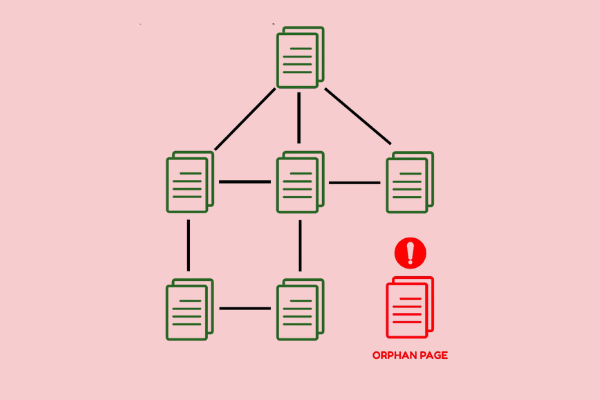Last Updated on 3 months by Gülenber Han
You need to know where you’re starting if you want to make progress in the SEO world. Conducting an SEO analysis will provide you with the information you require — your status report — so you can determine where to begin. You may then map out your website SEO analysis, deciding where you need to improve and what you should focus on. A website SEO analysis, also known as an SEO analysis, is similar to a status report. It assists you in determining how successful your SEO page analysis strategy is being implemented, but it doesn’t end there. Finally, an analysis like this reveals where your traffic is coming from, how you’re executing your content strategy, which keywords you’re ranking for, who your competitors are, where they’re positioning themselves, how you’re performing for both on-page and off-page SEO page analysis factors, and whether you have any technical errors. An SEO analysis, on the other hand, goes beyond where you are now and asks you to assess where you are heading in order to discover areas where you need to improve. With the information gathered during analysis, you may create a complete picture of your execution and identify areas where you’re falling short or missing chances. However, for all these analyses to be successful, you need to work with an SEO agency.
What is SEO Analysis?

The practice of extensively reviewing a website in order to acquire a better understanding of how effectively it has been optimized and what can be done to help it improve is known as website SEO analysis.
First and foremost, SEO analysis necessitates a thorough examination of the content on a company’s website. This may be readily accomplished on the BrightEdge platform by entering the brand URL into the Data Cube and seeing which keywords the site scores strongly for. When you go further into keyword reporting, you’ll find out how each page ranks for the keywords in your keyword groupings. The next step in the study is to consider how this performance affects the brand. You want to see how well your content ranks for the intended term, how effectively it’s optimized, and how this affects traffic and leads.
Knowing how to run a website SEO analysis will provide you with a lot more information about your page’s performance and how to improve it. Keep in mind that the higher a page ranks on the SERP, the more traffic it may get, and hence the more leads and customers it can generate. Brands may identify areas for improvement if they have a better awareness of their present degree of optimization.
Why Is SEO Analysis Important?
An SEO analysis may show you where you can enhance your site’s content and technological features to improve user experience and offer search engines context and correlations between your content and the search query they’re using. Simply put, you need to do a website SEO analysis if you want to rank higher, expand your reach, increase traffic, and meet your company’s objectives. With an analysis, you’re not guessing; you’re making smart decisions, which saves time and money. Without initially completing a comprehensive SEO analysis, it’s practically impossible to make informed decisions about how to increase your site’s SERP ranking.
In the digital era, organic search traffic is still one of the most potent sales and marketing channels. A prospect has few options for finding your business if your website isn’t easily accessible on relevant searches, whether from a desktop or mobile device. SEO analysis is a process for ensuring that your company is visible to today’s customers. It’s also how you’ll stay up with the fast-paced changes in search algorithms and results, as well as the online competitive scene.
Because SEO is a zero-sum game, researching your rivals’ websites is an important step to perform early on in the optimization process. It is, without a doubt, the most important step to take before beginning a website SEO analysis. You must overtake a competition to get your website into page one of Google, Yahoo, and Bing!
What Is On-Page SEO?

The technique of boosting a webpage’s rating in search engine results pages in order to gain visits is known as on-page SEO analysis. On-page elements include content, page architecture, and HTML source code. SEO page analysis is critical for your company since it tells search engines how your site delivers value to users. It essentially helps users and search engine algorithms recognize your site. Poor SEO page analysis might make it difficult for your site to get found through organic search. The benefit of SEO page analysis is that you have complete control over it. This is why it’s crucial to understand how to evaluate it and adjust it to current on-page SEO trends.
SEO page analysis is the process of applying SEO best practices to the content you write in order to improve its search engine ranking. On-page SEO audits include:
- Headings
- Query click-through rates
- Title tags content
- Internal link structure
Specialists gain from on-page website SEO analysis since it provides information that suggests places for development. This information can then be used to expand reach by catching more relevant keywords and optimizing content with freshly collected data.
What Is Off-Page SEO?
Off-page SEO refers to the SEO activities that you and your team undertake outside of your website in order to boost the search engine ranking of a webpage. Off-page SEO includes things like internal link building, external link building, guest blogging, and local citation directories and sites. You can help your website rank at the top of search engine results pages by adding off-page SEO to your strategy.
SEO page analysis refers to measures conducted away from your website in order to influence SERP ranks. This is where you would examine:
- Anchor text distribution
- Link source quality
- The number of backlinks to certain sites
- Backlink traffic referral
There are even more factors that an SEO Firm should examine in order to have a solid backlink profile:
- Including a significant number of natural, relevant, and high-authority backlinks
- Selection of natural anchor text
- Reduce the quantity of low-quality connections to a minimum.
Backlink profile analysis, in other words, indicates the overall quality of backlinks your website has accumulated over time.
Check Your Visibility on Google
It’s crucial to start with a bird’s eye view while doing an SEO analysis. Determine how many of your website’s pages are indexed by Google and have a better sense of your site’s overall visibility. When you’re looking at your traffic, you’ll want to look at each channel to see where it’s coming from. This includes looking at your organic, referral, social media, email marketing, paid search, paid social, and direct traffic, as well as any other potential sources of traffic.
The majority of your traffic should ideally come from organic sources since this will often provide the most visits. Furthermore, unlike commercial channels, you do not have to explicitly pay for organic visits. Driving traffic to your website from organic sources on a regular basis can guarantee that you have a steady supply of new visitors, allowing you to create leads and add additional contacts to your funnel. If organic traffic isn’t driving the bulk of your traffic, you should reconsider your SEO analysis. While you’re working on the other aspects of your research, you’ll probably figure out how to change your plan.
Check URLs and Meta Descriptions

URLs should be reduced to four to five words. Also, these words accurately convey the content of the website. You may choose to optimize and change your URLs if they’re lengthy or irrelevant, so search engine bots can better grasp what’s on the page. However, be aware that this may have an impact on the previous URL’s link juice. You may, however, make as many changes to the meta descriptions as you wish. Also, a brief synopsis of your page’s content, should all be included in your meta descriptions.
Analyze Titles and Headings
The titles should be appealing to users and encourage them to click on your website. Make sure to include the right SEO keywords for your website in both your titles and headers. Remember that ranking for high-volume keywords might be difficult. So go for a long-tail phrase that is less competitive and will enhance your chances of ranking on the first page of a SERP.
Evaluate Incoming Links
Incoming links, also known as inbound links or backlinks, are hyperlinked links to your site from another website. Backlinks can indicate to search engines that your website is a reliable source, thus they can have a significant influence on your SEO ranking. Check the incoming links to your site to see who is connecting to you and what you can do to improve your search rankings.
External links play a significant role in your website’s SEO analysis. When other high-quality relevant sites link to you as a reference, Google understands this as a trademark and recognizes your site as an authority in your field. Analyzing your backlinks and devising a backlink-building plan might be crucial to your site’s success. Backlinks may be checked using a variety of SEO tools.
Analyze Your Spam Score
Of course, although you want a lot of relevant backlinks from high-domain-authority sites, you don’t want an avalanche of links from low-authority sites. That is why it is critical to keep track of your spam score. Your spam score will grow if you have a lot of incoming links from low-authority domains. As a result, aim to delete any ‘poor’ incoming connections while reviewing your inbound links. You may try contacting the webmaster and asking them to delete the link from their page, or you can go one step further and disavow the link.
The percentage of sites connecting to yours that contain red flags typically associated with spammy sites is measured by the spam score, a rating system established by Moz. Low spam scores are desirable, however, larger scores indicate that your site may be linked to a large number of low-authority sites. If you discover you have a high spam score, it’s a good idea to call out and request that the links be changed to no-follow.
Check Your Internal Links
Internal linking is the process of adding links to other pages on your website to assist users in navigating between them. Internal linking is an excellent website SEO analysis for improving your search engine results. Furthermore, it has the potential to enhance the user experience. Internal links to other relevant pages on your site should be included on both newer and older website pages.
Investigate For Broken Links
If your site contains a large number of technical issues, Google will soon de-prioritize your content. Errors are a significant red flag for search engines since they indicate that your site isn’t reliable and may not give a decent user experience for your visitors. Your site is unlikely to rank highly if it has several broken links, 404 errors (when browsers can’t locate a page on the server), missing pictures, redirect loops, duplicate content, sluggish loading pages, and a variety of other difficulties. Any good website SEO analysis starts with making sure your site is technically solid and error-free. This is the place to start if you’re having issues in this area.
Be on the watch for any broken links on your site, since they can degrade the user experience and have a poor influence on website SEO analysis. Broken links can be fixed by confirming appropriate spelling or by performing a 301 redirect to a new but still relevant URL.
Analyze Your Website Content
The importance of content in your website’s SEO cannot be overstated. Check for duplicate material, which is an SEO red flag, and if required, de-index or delete it. Also, ensure that your information is of high quality and free of mistakes. Begin with your most popular pages, then on to smaller articles and pages. You can also organize the content of your website with topic cluster.
Your editorial should be directly informed by your content strategy analysis. If you see that you’re lacking content on themes you should cover, or if you’ve produced posts on topics for which you don’t rank, you’ll need to either create new content or optimize existing content. Overall, your material should answer your customers’ concerns and assist them in moving from one stage to the next. If this isn’t the case, you’ll need to generate fresh content to complete your funnel and provide each contact with clear next steps.
Audit Your Images
Because search engine bots can’t explore your photos, it’s critical that you utilize suitable alt language to describe the appearance and purpose of each image. Another picture optimization suggestion is to compress your photos to minimize their size, which helps speed up page loading.
Check Your Page Speed
Because page speed has an impact on your website’s website SEO analysis and general user experience, you should monitor it on a regular basis to ensure that it is operating swiftly and efficiently. For a quick and reliable page load speed test, you can use Google’s free PageSpeed Insights tool.










